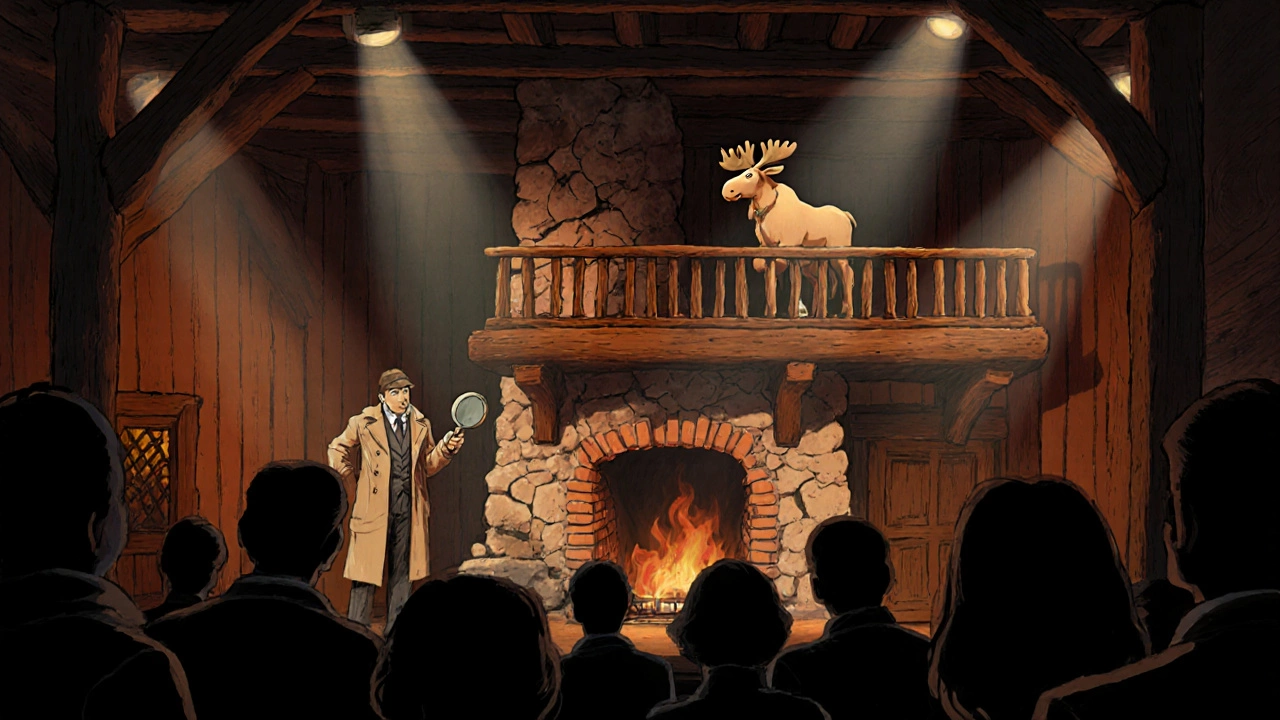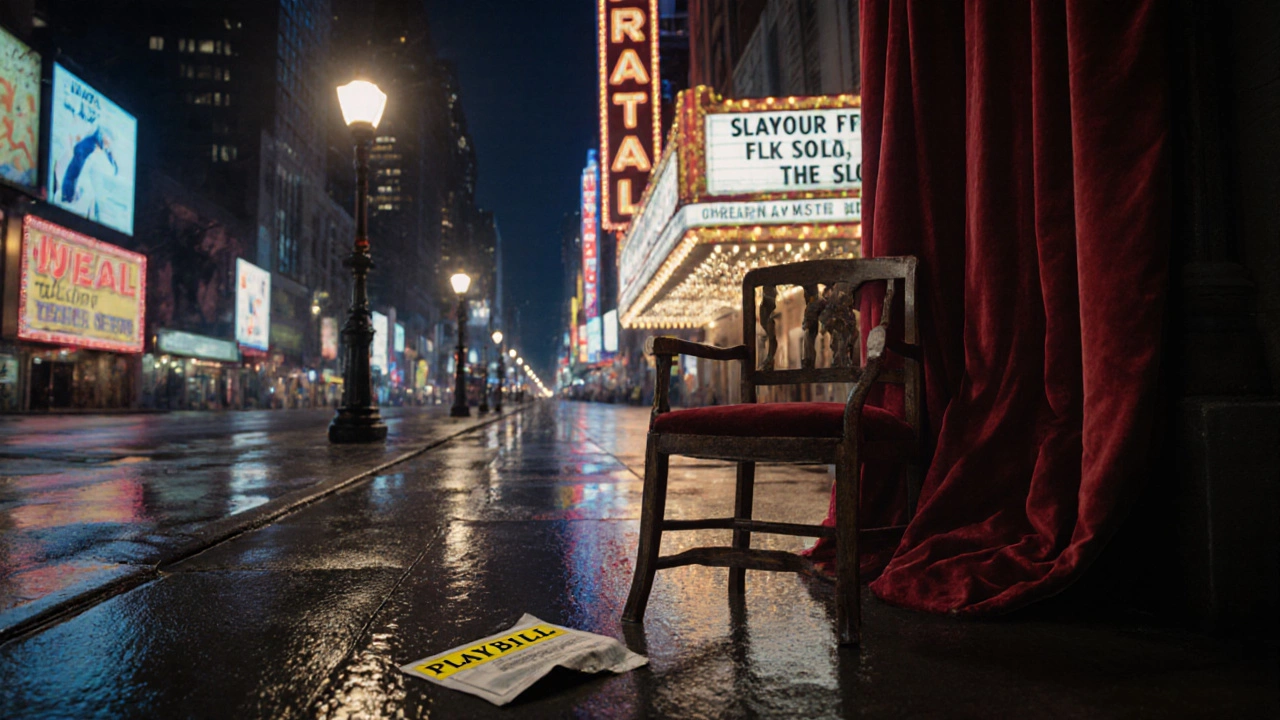Broadway Flop Calculator
Calculate Your Production's Risk
Enter your Broadway show's financials to see if you're in danger of becoming the next flop like Moose Murders (1971: 160% loss).
When a show closes after just a handful of performances, Broadway headlines scream biggest Broadway flop and the theater world tries to make sense of the disaster. Over the decades, dozens of productions have vanished before they could find an audience, but one title keeps popping up in every discussion of Broadway’s darkest moments: Moose Murders - a 1971 musical that opened, shut down, and became a cautionary tale for producers everywhere.
What Makes a Broadway Production a Flop?
Before diving into the story of the musical that still haunts investors, it helps to define the criteria.
- Financial loss: The production’s expenses far exceed its ticket revenue, often leaving investors with a negative return of 80% or more.
- Critical reception: Reviews from major outlets like The New York Times and Variety are overwhelmingly negative, discouraging word‑of‑mouth promotion.
- Short run: The show closes after a minimal number of performances - sometimes fewer than ten.
- Legacy impact: The failure becomes a reference point in industry conversations, often cited as a benchmark for “what not to do.”
While many shows meet one or two of these criteria, only a handful hit all four, earning the unofficial title of “biggest flop.”
The Legend of Moose Murders
Premiering at the Eugene O'Neill Theatre on February 22, 1971, Moose Murders was billed as a dark comedy with a splashy score and a star‑studded creative team. The show was produced by the famed impresario David Merrick, who had previously delivered hits like Hello, Dolly! and Cats. The music was written by Don Appell and the book, a bizarre murder‑mystery set in a rural inn, was penned by Bob Merrill.
From the start, the ingredients looked promising: a proven producer, an experienced creative team, and a sizable budget of roughly $250,000 (equivalent to about $1.7 million in 2025 dollars). However, the script’s nonsensical plot - “a detective trying to solve a murder while a moose roams the stage” - confused audiences, and critics pounced. The New York Times review labeled it “a theatrical calamity of epic proportions,” while Variety called it “a train wreck that never should have left the station.”
Within 16 performances (including a few previews), the show was officially closed. The loss was estimated at $400,000, a staggering hit to the investors and to Merrick’s reputation.
Financial Fallout: Numbers That Shock
To understand why Moose Murders still ranks as the biggest flop, look at the hard data.
| Show | Opening Year | # Performances | Budget (USD) | Estimated Loss (USD) |
|---|---|---|---|---|
| Moose Murders | 1971 | 16 | 250,000 | 400,000 |
| Rebecca | 2006 | 118 | 13,500,000 | 10,000,000 |
| Spider‑Man: Turn Off the Dark | 2011 | 1,337 | 75,000,000 | 30,000,000 |
| Legs Diamond | 1988 | 64 | 2,500,000 | 2,100,000 |
| Carrie | 1988 | 5 | 5,000,000 | 4,800,000 |
While later productions like Spider‑Man: Turn Off the Dark lost more money in absolute terms, Moose Murders remains the most disastrous when you factor in its tiny budget and minuscule run. The loss-to-budget ratio tops the list at 160%.

Critical Reception: The Reviews That Sank the Ship
Broadway critics wield tremendous influence. In the case of Moose Murders, the reviews were not just negative; they were brutal.
- Frank Rich (The New York Times): “An incoherent mishmash that makes no sense to anyone, let alone a paying audience.”
- Clive Barnes (Variety): “A spectacular failure that will be remembered for the wrong reasons.”
- Walter Kerr (New York Post): “If you ever wanted to experience a theatre fire without the flames, this is it.”
These headlines caused immediate ticket cancellations, and the press corps kept revisiting the disaster in retrospectives for years, cementing its reputation.
Beyond Moose Murders: Other Notable Broadway Disasters
While Moose Murders often tops the conversation, it’s useful to explore other flops that shaped industry practices.
- Rebecca (2006) - a lavish adaptation of the classic novel that closed after 118 performances, losing roughly $10 million.
- Spider‑Man: Turn Off the Dark (2011) - an ambitious high‑tech spectacle plagued by injuries, technical glitches, and a $30 million loss.
- Carrie (1988) - a horror musical that never recovered from a disastrous preview, closing after just five shows.
- Legs Diamond (1988) - a gangster musical that flopped despite big names, losing $2.1 million.
Each of these productions taught producers new lessons about budgeting, audience testing, and the perils of over‑ambition.
Lessons Learned: How Producers Avoid the Next Flop
Post‑Moose Murders, Broadway executives instituted several safeguards.
- Extended out‑of‑town tryouts: Shows now spend months in regional theatres to gauge audience reaction before hitting the Great White Way.
- Rigorous financial modeling: Investors demand detailed break‑even analyses, often limiting exposure to 10‑15% of the total budget.
- Creative workshops: Writers and composers collaborate with focus groups early on, ensuring the story and music are coherent.
- Safety and technical audits: Especially for high‑tech productions, third‑party engineers review set designs to prevent costly delays.
These practices have reduced the frequency of cataclysmic failures, though they haven’t eliminated them entirely.

Spotting a Potential Flop: Red Flags for Audiences and Investors
If you’re considering buying a ticket or investing in a new show, watch for warning signs.
- Lack of clear storyline: Vague or overly complex plots often alienate audiences.
- Excessive reliance on spectacle: Shows that prioritize special effects over narrative can crumble when technical issues arise.
- Negative early press: If the first few reviews are scathing, momentum is hard to regain.
- Inflated budgets with no proven draw: Big money doesn’t guarantee audience interest, especially for untested material.
Keeping an eye on these factors can save you from the disappointment - and the wallet‑ache - that accompanies a Broadway flop.
Mini FAQ: Quick Answers About Broadway’s Biggest Flops
Why is Moose Murders considered the biggest flop?
It lost the highest percentage of its budget (over 160%) after only 16 performances, and its disastrous reviews made it a benchmark for failure.
Are there any flops that lost more money in absolute terms?
Yes. Spider‑Man: Turn Off the Dark lost about $30 million, making it the most expensive Broadway failure in raw dollars.
Did any of the flops ever get revived successfully?
A few, like Carrie, have been re‑imagined in smaller venues and received warmer receptions, though they never returned to Broadway.
What impact did the flop have on the producer David Merrick?
Merrick’s reputation suffered; he became more cautious, opting for proven material and tighter budgets in later projects.
How do modern productions mitigate the risk of a flop?
They use extended out‑of‑town tryouts, data‑driven marketing, and phased funding to test audience response before committing full resources.
Conclusion: The Enduring Lesson of Moose Murders
Broadway’s glittering lights can hide a simmering disaster, and Moose Murders remains the ultimate cautionary tale. Whether you’re a theater lover, a potential investor, or just curious about showbiz history, remembering this flop helps you appreciate the delicate balance between artistic ambition and commercial reality. The next time you hear the phrase “biggest Broadway flop,” you’ll know exactly why it still matters - and what the industry learned from that ill‑fated night when a moose roamed the stage.

